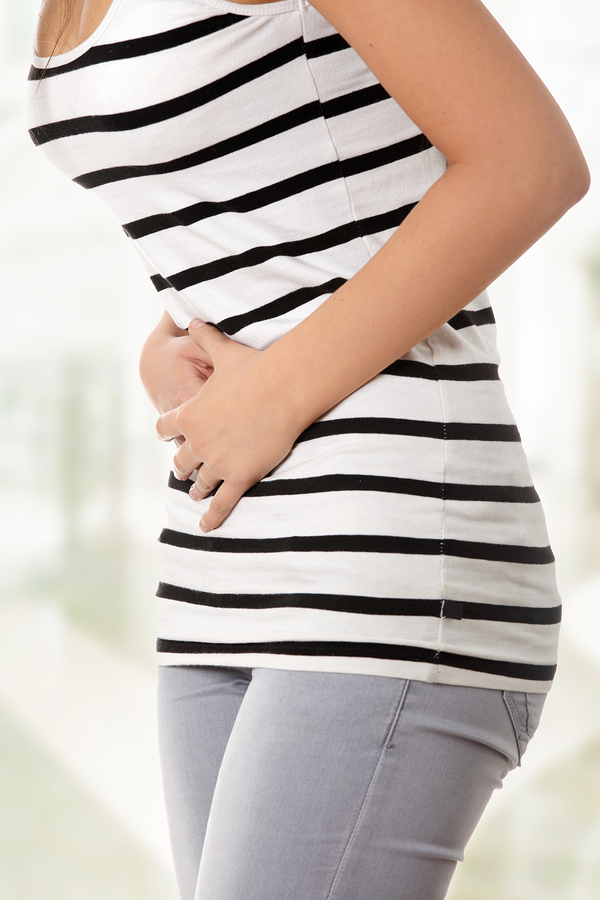Acupuncture has been found to be very effective in relieving pains, and more specifically menstrual cramps, even though in fact the pain here is merely a symptom, a symptom caused by an imbalance in the body which is the root of the problem.
Proper treatment would resolve both the root cause as well as the symptom. Many years of experience in the field of women’s health and gynecology has made Chinese Medicine popular among many women.
So why should you suffer every month?
Do you truly want to take contraceptive pills just to relieve the pain? A natural form of treatment can assist you in regulating your monthly cycle and resolving this problem once and for all.
Menstrual Cramps – Background
Menstrual pain or what known as the medical term dysmenorrhea is described as pain in the lower abdomen and pelvic region which occurs before and/or during the monthly menstruation. This pain often spreads to the lower back and even the legs/thighs. At times it can arrive after the period.
In professional terminology, menstrual pains have different names, such as menstrual cramps or dysmenorrhea. The nature of the pain can change, from a sharp, localized, contracting pain in the lower abdomen that comes and goes, to a dull, dispersed constant pain. In most cases the pain will appear with the beginning of the monthly menstruation/period, will reach its peak on the first day and subside within two to three days.
Menstrual Cramps – Incidence
Dysmenorrhea is a very common condition! Research shows that over 75% of young women, and approximately 25-50% of older women, experience pain and discomfort during the monthly cycle.
Menstrual Cramps – Causes
Menstrual pain can be divided into two groups:
- Primary dysmenorrhea – pain which appears with the menstrual bleeding in women in which no other health issues have been diagnosed.
- Secondary dysmenorrhea – pain which may appear during the whole time of menstrual bleeding, or even start before the menstrual cycle and last longer than usual. This pain is usually an accompanying sign of other gynecological disorders, such as endometriosis (PID – Pelvic Inflammatory Disease) and other conditions.
To see the article about Endometriosis click here.
Menstrual Cramps – Conventional Treatment
The most common treatment is the prescription of non-steroidal anti-inflammatory drugs (NSAIDS), which help in some cases, though unfortunately, or not (as you can also manage the condition without these medications), the body develops resistance to these drugs and at some stage they prove ineffective. In addition, these drugs have many side effects which, with the increase in dosage due to the body’s habituation to them, may endanger human life. For example, aspirin which is used for pain relief and is one of the more common medicines in this group, is known to cause bleeding in the digestive system, a condition known as a peptic ulcer.
Another medication given today as a common treatment for menstrual cramps is contraceptive (birth control) pills. It is hard to actually call this a proper ‘treatment’ because the pain returns the moment the pills are stopped, and sometimes the force of the pain is even stronger. (It is unnecessary to mention here the various dangers in taking contraceptive pills.)
Menstrual Cramps – Acupuncture and Chinese Medicine
Chinese Medicine has many years of experience with very high success rates in the treatment of gynecological diseases. According to Chinese Medicine, and as mentioned before, there is an imbalance at the core of the body’s condition which causes the appearance pain, this main sign of the condition being merely a branch of the actual cause. During treatment, both the pain – the symptom (the branch) – and the source of the problem (the root) will be treated, the intention being to completely eliminate the problem.
Chinese Medicine sees the imbalance as manifesting in a few possible ways:
- Qi and Blood Stagnation – Qi and Blood stagnation can cause menstrual cramps due to internal factors such as imbalanced emotions, stress and mental tension. Other factors may be overwork and excess tiring of the body, as well as improper nutrition which will weaken the digestive system in general, and especially the Spleen, thus injuring the production process of Qi and Blood in the body. All these factors can cause improper movement of Qi and Blood which will inevitably lead to stagnation and the appearance of pain and cramping. In most such cases, women with this condition will suffer from localized, sharp, cramping pain in the lower abdominal region.
- Invasion of external pathogen – The factors that can cause this condition are either external cold which enters the body before or during the period or the ingestion of cold-property foods. This may result in cold invading the uterus, causing stagnation of Qi and Blood in the region which will lead to pain. In most cases this pain will worsen in cold conditions, and women suffering from this disorder will tend to warm the lower abdominal area to prevent or relieve the pain.
- Qi and Blood Deficiency – This is similar to the first cause. Should the patient have a weak constitution, or had a long-term disease which injured the body’s Qi and Blood, it may lead to the weak movement of Blood. Women with this condition will mostly experience a dull and dispersed pain or ache in the lower abdominal region.
Acupuncture in particular, and Chinese Medicine in general, has the ability to give a highly effective, quality response to this condition, with the added advantage of being free of side effects. In most cases the treatment involves only acupuncture, and, if deemed necessary, a herbal remedy may be added.
Are you interested in knowing more about Acupuncture and pain relief ?
Read the UK’S National Institute of Health and Care Excellence (NICE) guideline (NG193), which recommend Acupuncture as an effective option in managing chronic pain.
Read the BBC news article about NICE guideline

